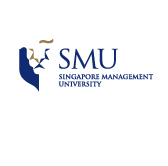Publication Type
Conference Proceeding Article
Version
acceptedVersion
Publication Date
1-2025
Abstract
Training a model for food recognition is challenging because the training samples, which are typically crawled from the Internet, are visually different from the pictures captured by users in the free-living environment. In addition to this domain-shift problem, the real-world food datasets tend to be long-tailed distributed and some dishes of different categories exhibit subtle variations that are difficult to distinguish visually. In this paper, we present a framework empowered with large language models (LLMs) to address these challenges in food recognition. We first leverage LLMs to parse food images to generate food titles and ingredients. Then, we project the generated texts and food images from different domains to a shared embedding space to maximize the pair similarities. Finally, we take the aligned features of both modalities for recognition. With this simple framework, we show that our proposed approach can outperform the existing approaches tailored for long-tailed data distribution, domain adaptation, and fine-grained classification, respectively, on two food datasets.
Keywords
Class imbalance, Domain adaptation, Food recognition
Discipline
Artificial Intelligence and Robotics | Databases and Information Systems
Research Areas
Data Science and Engineering
Publication
MultiMedia Modeling: 31st International Conference on Multimedia Modeling, MMM 2025, Nara, January 8-10, Proceedings
Volume
15521
First Page
282
Last Page
295
ISBN
9789819620609
Identifier
10.1007/978-981-96-2061-6_21
Publisher
Springer
City or Country
Cham
Citation
WANG, Qing; NGO, Chong-wah; LIM, Ee-peng; and SUN, Qianru.
LLMs-based augmentation for domain adaptation in long-tailed food datasets. (2025). MultiMedia Modeling: 31st International Conference on Multimedia Modeling, MMM 2025, Nara, January 8-10, Proceedings. 15521, 282-295.
Available at: https://ink.library.smu.edu.sg/sis_research/10103
Creative Commons License

This work is licensed under a Creative Commons Attribution-NonCommercial-No Derivative Works 4.0 International License.
Additional URL
https://doi.org/10.1007/978-981-96-2061-6_21


